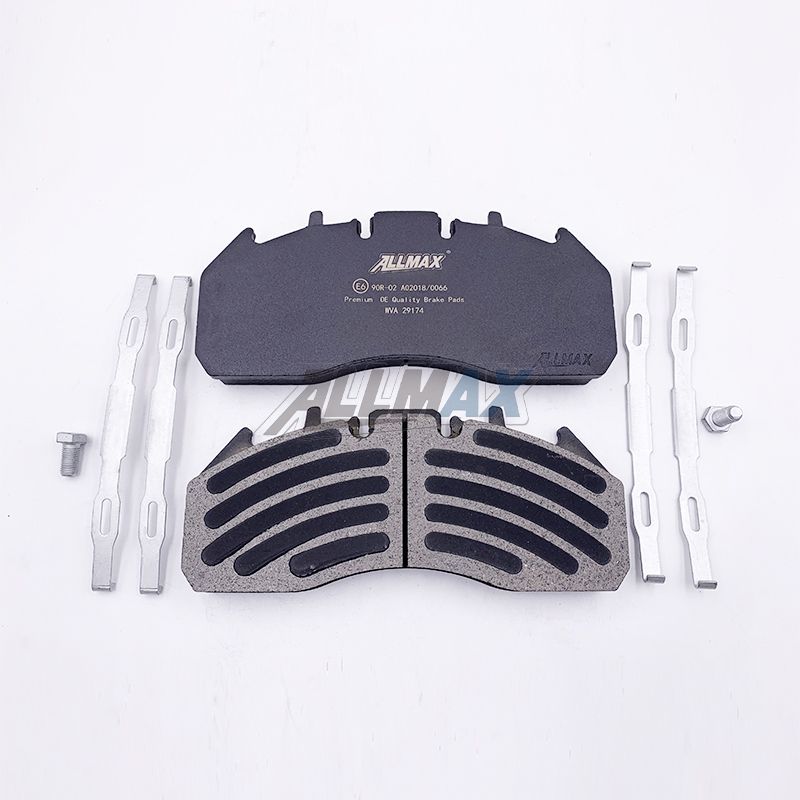Choosing the right brake pads for commercial vehicles is crucial for ensuring safe and reliable braking performance. With a wide range of options available in the market, it's important to consider various factors to make an informed decision. Here are some key points to consider when selecting brake pads for commercial vehicles:

Start by considering the specifications of your commercial vehicle. Different vehicles have different braking requirements based on factors such as weight, load capacity, and driving conditions. Consult the vehicle's manufacturer or refer to the owner's manual to determine the recommended brake pad specifications.
There are several types of brake pads available, including organic, semi-metallic, and ceramic. Each type has its own characteristics and performance attributes. Organic brake pads provide good stopping power and low noise but wear faster. Semi-metallic pads offer excellent heat dissipation and durability, but they may generate more brake dust and noise. Ceramic pads provide superior performance, low noise, and less brake dust but are typically more expensive. Consider the specific needs and requirements of your commercial vehicle when choosing the type of brake pad.
Consider the expected performance of the brake pads. Commercial vehicles often require brake pads with robust stopping power and reliable performance under heavy loads and frequent braking. Look for brake pads that offer excellent braking efficiency, consistent performance over a wide range of temperatures, and sufficient fade resistance to ensure braking effectiveness even during prolonged or repetitive braking.
Commercial vehicles undergo demanding usage, including frequent starts, stops, and heavy loads. Opt for brake pads that are durable and have a long lifespan to minimize the need for frequent replacements. Look for brake pads made from high-quality materials and those that are designed to withstand heavy usage without compromising performance.
Consider the noise and dust levels associated with different brake pad materials. While some brake pads produce more brake dust and noise, others prioritize low noise and minimal dust generation. Evaluate your priorities and select brake pads that strike the right balance between performance and noise/dust levels.
Decide whether to choose Original Equipment Manufacturer (OEM) brake pads or aftermarket options. OEM brake pads are designed specifically for your vehicle model and are generally considered a reliable choice. Aftermarket brake pads offer a wider range of options and can sometimes provide comparable or even superior performance at a lower cost. However, ensure that the aftermarket brake pads meet the necessary quality standards and specifications.
Consult reviews, ratings, and recommendations from reputable sources or fellow commercial vehicle owners. Learn from the experiences of others who have used specific brake pad brands or models. Consider the overall customer satisfaction, reliability, and performance feedback to make an informed decision.
Compare prices and consider the overall value for money when selecting brake pads. Take into account factors such as durability, performance, and warranties offered by the manufacturer. While price is important, prioritize the quality and reliability of the brake pads to ensure safety and long-term cost-effectiveness.
In conclusion, selecting the right brake pads for commercial vehicles requires considering factors such as vehicle specifications, brake pad types, performance, durability, noise and dust levels, OEM or aftermarket options, reviews, price, and warranty. By carefully evaluating these factors, you can make an informed decision and choose brake pads that provide reliable braking performance, safety, and durability for your commercial vehicle.
Copyright:@2020-2021
Comments Please sign in or sign up to post.
0
0 of 500 characters used